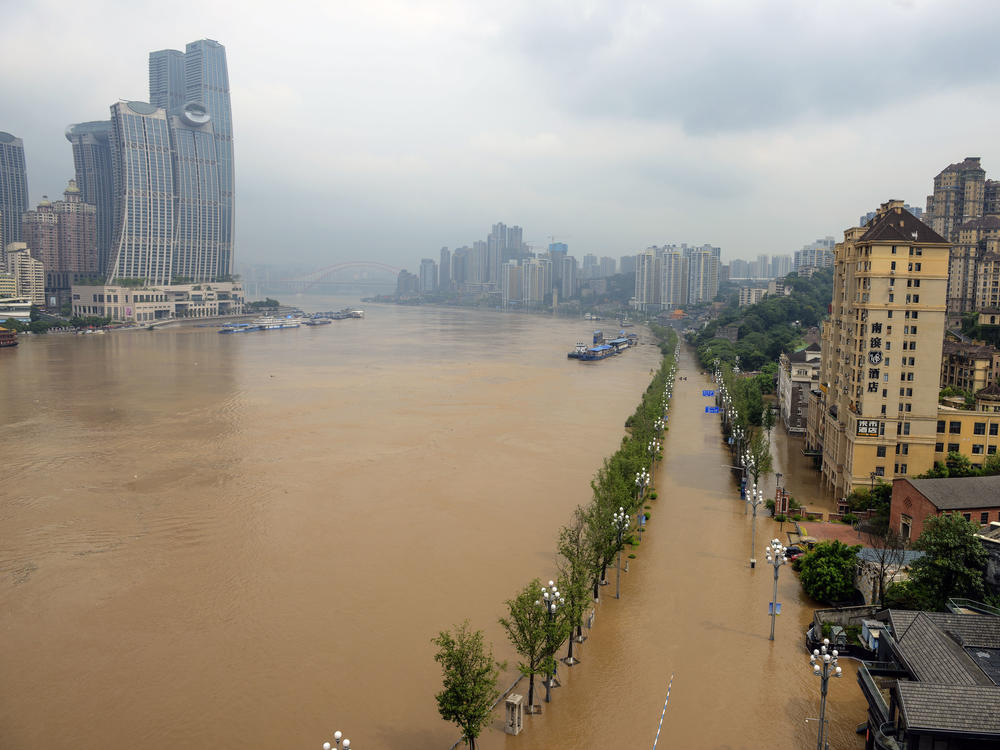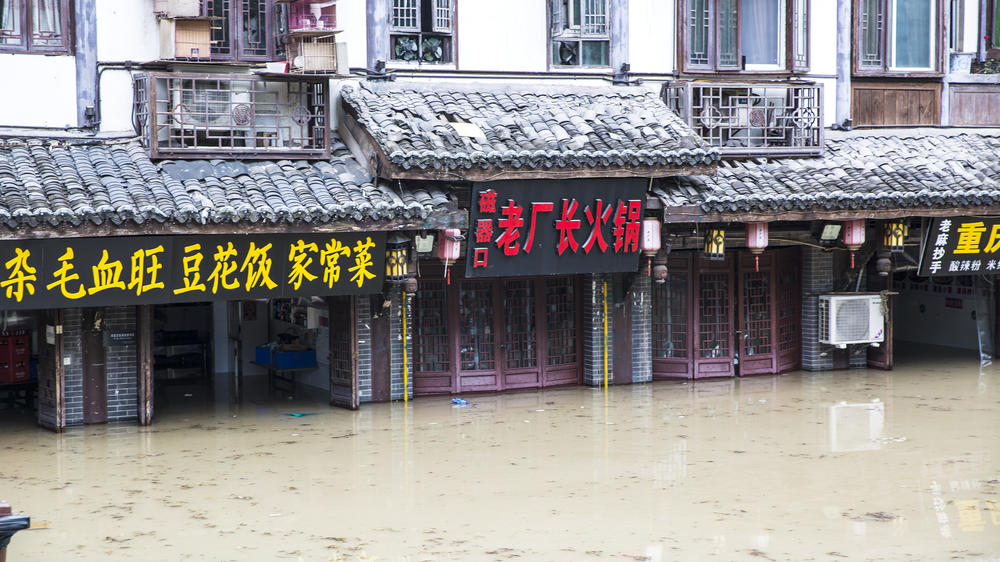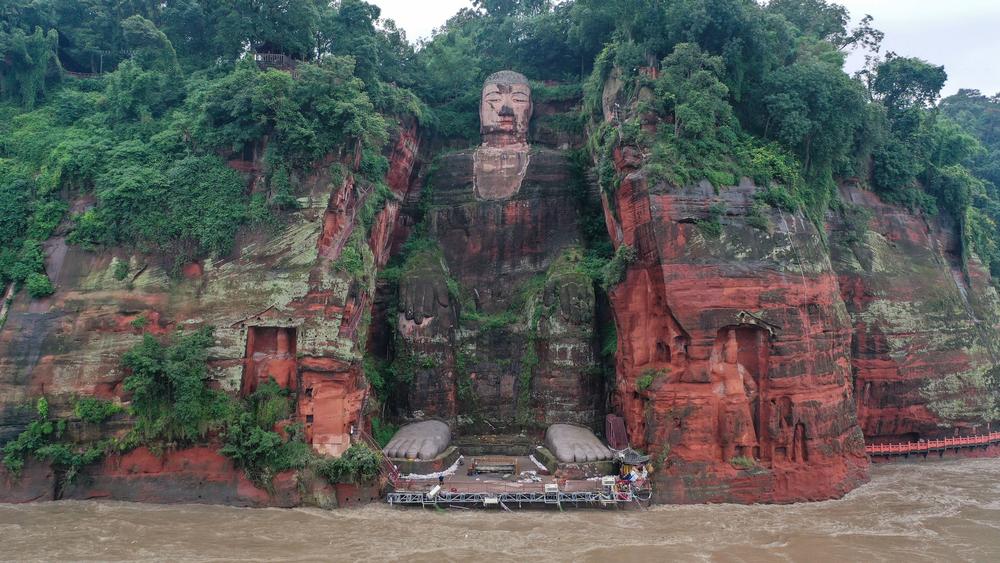Section Branding
Header Content
100,000 Evacuated As Massive Flooding In China Threatens Ancient Giant Buddha Statue
Primary Content
Heavy seasonal rainfall, which has caused the worst flooding in decades across China's interior, forced officials at the Three Gorges Dam on Wednesday to open all 10 spillways for the first-time ever in an effort to control rising water on a reservoir along the Yangtze River.
Since June, China has been battling a series of devastating floods, stretching from the country's southwestern interior to its east coast. Officials are calling it the worst since 1981, with estimates of $25 billion worth of damage and the displacement of millions of people.
China's Ministry of Water Resources on Tuesday raised the emergency response in hardest-hit Sichuan province to its highest level, according to China Global Television Network.
The People's Daily newspaper said the Three Gorges reservoir is seeing inflow of 72,000 cubic meters (nearly 20 million gallons) per second, the highest level since the reservoir was opened in 2003, the ministry said, with more water expected in coming days.
About 100,000 people have been evacuated in Sichuan. Authorities reportedly dispatched helicopters to rescue those stranded by the rising waters.
In the southern part of the province, where the Min and Dadu rivers join, the flooding lapped at the toes of the Leshan Giant Buddha statue — a major tourist attraction in the region. The 8th-century statue, carved out of a sandstone cliff face, is listed as a UNESCO World Heritage Site. It's the first time water has reached the statue's toes since 1949, the same year as the communist victory that created the People's Republic of China.
Police, volunteers and staff at the statue, located outside Chengdu, stacked sandbags in an effort to hold the flood waters back from the the 71-meter (233-foot) tall landmark, CCTV reported.
The Three Gorges Dam, part of a massive hydroelectric project completed in 2003, was meant to tame Yangtze flooding. However, its reservoir lake has been 10 meters (32 feet) above its critical flood level for more than a month, according to Reuters.
Meanwhile, Hong Kong and Macau had been bracing for Typhoon Higos, which looked to have southern China in its sights. However, Hong Kong's Observatory cancelled its typhoon warning on Wednesday as the storm moved away from the city.
China's state media also reported recently that landslides backed up a river in Gansu province at the city of Longnan, trapping 48 people on rooftops.
Copyright 2020 NPR. To see more, visit https://www.npr.org.
Bottom Content




